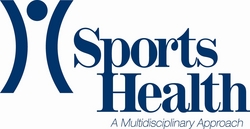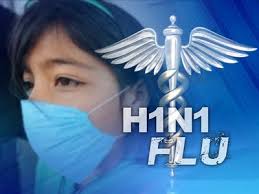
Shirley Irene Patola (Collinge) January 6, 1937 October 22, 2009. Our much loved mother, grandmother, sister, aunt, and friend passed away at home, in the company of her family, after a battle with cancer at the age of 72 years. Shirley is survived by sons, Mark (Lindsay) and David (Shannen); granddaughters, Ava and Mira; sister, Marge Foley-Jacob; brother in law, Nick Patola; nieces and nephews; and many friends. She was predeceased by her husband, Walter; parents, Harry and Violet Collinge; and her brother, Wayne. Shirley was born on January 6, 1937 in Eston, SK. She attended grade school in Quill Lake and graduated from high school in Kindersley, SK in 1955. Shirley became a qualified nurse in 1958 and received her B.Sc. in nursing in 1964. She worked as a general duty nurse, a clinical teacher, a researcher and an administrator. Her most rewarding work was the 18 years she spent as the clinic nurse for children and adults with Cystic Fibrosis. She retired in 1998 after 40 years in the profession. Shirley married Walt Patola in 1966. Mark was born in 1971 and David in 1972. Shirley's first grandchild, Ava Jane, was born in August 2007 and her second grandchild, Mira Shirley, was born in April 2009. Shirley was very proud to be a Grandma. Travel was a great enjoyment for her. But her greatest joy came from volunteering her time and helping others; which included her family, her friends and strangers (that were soon to be friends); and she had great memories of all of you. Vigil for Shirley will be held on Monday, October 26, 2009 at 7:00 p.m. from Park Funeral Chapel, 311 3rd Ave N, Saskatoon. Mass of Christian Burial will be celebrated by Rev. Fr. Joseph Nsiah on Tuesday, October 27, 2009 at 10:30 a.m. from St. Philip Neri Roman Catholic Church, 1904 Munroe Avenue, Saskatoon. Committal of Shirley's ashes will follow in Woodlawn Catholic Cemetery. In Shirley's honour Donations can be made to: The Children's Health & Hospital Foundation of Saskatchewan, 850, 410 22nd Street East, Saskatoon, SK S7K 5T6. To sign the online book of condolences visit www.parkfuneral.ca. Arrangements entrusted to Greg Lalach.
View/sign the Guestbook
 Fishguard Cardiac Rehabilitation Group's aims & objectives are:
Fishguard Cardiac Rehabilitation Group's aims & objectives are:











 Shirley Irene Patola (Collinge) January 6, 1937 October 22, 2009. Our much loved mother, grandmother, sister, aunt, and friend passed away at home, in the company of her family, after a battle with cancer at the age of 72 years. Shirley is survived by sons, Mark (Lindsay) and David (Shannen); granddaughters, Ava and Mira; sister, Marge Foley-Jacob; brother in law, Nick Patola; nieces and nephews; and many friends. She was predeceased by her husband, Walter; parents, Harry and Violet Collinge; and her brother, Wayne. Shirley was born on January 6, 1937 in Eston, SK. She attended grade school in Quill Lake and graduated from high school in Kindersley, SK in 1955. Shirley became a qualified nurse in 1958 and received her B.Sc. in nursing in 1964. She worked as a general duty nurse, a clinical teacher, a researcher and an administrator. Her most rewarding work was the 18 years she spent as the clinic nurse for children and adults with Cystic Fibrosis. She retired in 1998 after 40 years in the profession. Shirley married Walt Patola in 1966. Mark was born in 1971 and David in 1972. Shirley's first grandchild, Ava Jane, was born in August 2007 and her second grandchild, Mira Shirley, was born in April 2009. Shirley was very proud to be a Grandma. Travel was a great enjoyment for her. But her greatest joy came from volunteering her time and helping others; which included her family, her friends and strangers (that were soon to be friends); and she had great memories of all of you. Vigil for Shirley will be held on Monday, October 26, 2009 at 7:00 p.m. from Park Funeral Chapel, 311 3rd Ave N, Saskatoon. Mass of Christian Burial will be celebrated by Rev. Fr. Joseph Nsiah on Tuesday, October 27, 2009 at 10:30 a.m. from St. Philip Neri Roman Catholic Church, 1904 Munroe Avenue, Saskatoon. Committal of Shirley's ashes will follow in Woodlawn Catholic Cemetery. In Shirley's honour Donations can be made to: The Children's Health & Hospital Foundation of Saskatchewan, 850, 410 22nd Street East, Saskatoon, SK S7K 5T6. To sign the online book of condolences visit www.parkfuneral.ca. Arrangements entrusted to Greg Lalach.
Shirley Irene Patola (Collinge) January 6, 1937 October 22, 2009. Our much loved mother, grandmother, sister, aunt, and friend passed away at home, in the company of her family, after a battle with cancer at the age of 72 years. Shirley is survived by sons, Mark (Lindsay) and David (Shannen); granddaughters, Ava and Mira; sister, Marge Foley-Jacob; brother in law, Nick Patola; nieces and nephews; and many friends. She was predeceased by her husband, Walter; parents, Harry and Violet Collinge; and her brother, Wayne. Shirley was born on January 6, 1937 in Eston, SK. She attended grade school in Quill Lake and graduated from high school in Kindersley, SK in 1955. Shirley became a qualified nurse in 1958 and received her B.Sc. in nursing in 1964. She worked as a general duty nurse, a clinical teacher, a researcher and an administrator. Her most rewarding work was the 18 years she spent as the clinic nurse for children and adults with Cystic Fibrosis. She retired in 1998 after 40 years in the profession. Shirley married Walt Patola in 1966. Mark was born in 1971 and David in 1972. Shirley's first grandchild, Ava Jane, was born in August 2007 and her second grandchild, Mira Shirley, was born in April 2009. Shirley was very proud to be a Grandma. Travel was a great enjoyment for her. But her greatest joy came from volunteering her time and helping others; which included her family, her friends and strangers (that were soon to be friends); and she had great memories of all of you. Vigil for Shirley will be held on Monday, October 26, 2009 at 7:00 p.m. from Park Funeral Chapel, 311 3rd Ave N, Saskatoon. Mass of Christian Burial will be celebrated by Rev. Fr. Joseph Nsiah on Tuesday, October 27, 2009 at 10:30 a.m. from St. Philip Neri Roman Catholic Church, 1904 Munroe Avenue, Saskatoon. Committal of Shirley's ashes will follow in Woodlawn Catholic Cemetery. In Shirley's honour Donations can be made to: The Children's Health & Hospital Foundation of Saskatchewan, 850, 410 22nd Street East, Saskatoon, SK S7K 5T6. To sign the online book of condolences visit www.parkfuneral.ca. Arrangements entrusted to Greg Lalach. 
 Nestor Shabits 1935- 2009. It is with sadness that the family announces that the death of Nestor Shabits occurred at St. Paul's Hospital on Sunday, October 18th 2009 at the age of 74 years. Nestor is survived by his loving wife, Eva (nee Armistead); daughters, Shari (David Priest) and Marie (George Hutchinson), both of Vernon BC; sister, Elizabeth Kendrick of Victoria BC; aunt, Mary Farion; sister-in-law, Janet (Ken) Armistead of Winnipeg; brotherin-law, Frank Armistead of Regina; and sister-in-law, Janet Kostyna of Gravelbourg; as well as numerous cousins, nieces, nephews and friends. He was predeceased by his parents, Katherine (1976) and Paul (1974); sister, Eugenia Makahoniuk and her husband, Bill; brother, Adam; mother-in-law and father-in-law, Lucy and Cecil Armistead; and brothers-in-law, Graham Kendrick and Ken Armistead. Nestor was born on May 4th, 1935 near Verigin SK. The family moved to Benito when he was 5 years old where he attended school and worked on the farm as he grew up. He obtained his B.Sc. and B.Ed. degrees at Brandon College and while there enrolled in the Canadian Officers Training Corps. After graduation he started his teaching career in Durban Manitoba and later Waskada. He and Eva were married on July 7th 1962 in Swan River and they relocated to Brandon in 1966 where Nestor would teach high school classes for the next 22 years. In 1987 he attended Assiniboine Community College and received his Computer Technology Certificate following which he and Eva relocated to Saskatoon where Nestor continued his teaching career at Compucollege as well as Northlands College in Buffalo Narrows and LaLoche before retiring from CDI in Saskatoon. Nestor was a valued member of St. John's Anglican Church and was active in the men's club, Bridge Club, Supper Club, and mentoring of refugees. He was a driving force in the Coronary Artery Rehabilitation Group (CARG) holding many executive positions and editing the newsletter. He was on the Board of the Saskatoon Convalescent Home and a member of the Woodworker's Guild. Nestor was always busy and had a number of favorite pastimes and hobbies including wood working, gardening, photography, computer programming, walking and the outdoors as well as camping and campfire cooking and making cheese cake. Nestor particularly cherished the times he had with family and friends. Long weekends and summer holidays were spent traveling to and visiting with family both immediate and extended. Nestor had a lifelong dedication of giving back to his community and was always willing to help out wherever he saw a need. He was a kind, gentle and generous man with a dry sense of humor who will be dearly missed and lovingly remembered by his family and many friends. In lieu of flowers memorial donations may be made to CARG (Coronary Artery Rehabilitation Group 2020 College Dr. Saskatoon, SK S7N 2W4), the Prostrate Cancer Research Foundation (#306 145 Front St. E. Toronto ON M5A 1E3) or a charity of choice. Funeral Services will take place on Friday, October 23rd, 2009 at 2:00 p.m. at the St. John's Anglican Cathedral with inturnment to follow in the Columbarium prior to a reception in the Church Hall. The family invites members of CARG to wear their shirts in remembrance of Nestor. Condolences may be sent to mail@saskatoonfuneralhome.com. Arrangements have been entrusted to SASKATOON FUNERAL HOME.
Nestor Shabits 1935- 2009. It is with sadness that the family announces that the death of Nestor Shabits occurred at St. Paul's Hospital on Sunday, October 18th 2009 at the age of 74 years. Nestor is survived by his loving wife, Eva (nee Armistead); daughters, Shari (David Priest) and Marie (George Hutchinson), both of Vernon BC; sister, Elizabeth Kendrick of Victoria BC; aunt, Mary Farion; sister-in-law, Janet (Ken) Armistead of Winnipeg; brotherin-law, Frank Armistead of Regina; and sister-in-law, Janet Kostyna of Gravelbourg; as well as numerous cousins, nieces, nephews and friends. He was predeceased by his parents, Katherine (1976) and Paul (1974); sister, Eugenia Makahoniuk and her husband, Bill; brother, Adam; mother-in-law and father-in-law, Lucy and Cecil Armistead; and brothers-in-law, Graham Kendrick and Ken Armistead. Nestor was born on May 4th, 1935 near Verigin SK. The family moved to Benito when he was 5 years old where he attended school and worked on the farm as he grew up. He obtained his B.Sc. and B.Ed. degrees at Brandon College and while there enrolled in the Canadian Officers Training Corps. After graduation he started his teaching career in Durban Manitoba and later Waskada. He and Eva were married on July 7th 1962 in Swan River and they relocated to Brandon in 1966 where Nestor would teach high school classes for the next 22 years. In 1987 he attended Assiniboine Community College and received his Computer Technology Certificate following which he and Eva relocated to Saskatoon where Nestor continued his teaching career at Compucollege as well as Northlands College in Buffalo Narrows and LaLoche before retiring from CDI in Saskatoon. Nestor was a valued member of St. John's Anglican Church and was active in the men's club, Bridge Club, Supper Club, and mentoring of refugees. He was a driving force in the Coronary Artery Rehabilitation Group (CARG) holding many executive positions and editing the newsletter. He was on the Board of the Saskatoon Convalescent Home and a member of the Woodworker's Guild. Nestor was always busy and had a number of favorite pastimes and hobbies including wood working, gardening, photography, computer programming, walking and the outdoors as well as camping and campfire cooking and making cheese cake. Nestor particularly cherished the times he had with family and friends. Long weekends and summer holidays were spent traveling to and visiting with family both immediate and extended. Nestor had a lifelong dedication of giving back to his community and was always willing to help out wherever he saw a need. He was a kind, gentle and generous man with a dry sense of humor who will be dearly missed and lovingly remembered by his family and many friends. In lieu of flowers memorial donations may be made to CARG (Coronary Artery Rehabilitation Group 2020 College Dr. Saskatoon, SK S7N 2W4), the Prostrate Cancer Research Foundation (#306 145 Front St. E. Toronto ON M5A 1E3) or a charity of choice. Funeral Services will take place on Friday, October 23rd, 2009 at 2:00 p.m. at the St. John's Anglican Cathedral with inturnment to follow in the Columbarium prior to a reception in the Church Hall. The family invites members of CARG to wear their shirts in remembrance of Nestor. Condolences may be sent to mail@saskatoonfuneralhome.com. Arrangements have been entrusted to SASKATOON FUNERAL HOME. 












